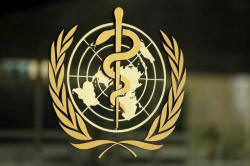|
 WHO
says new drugs urgently needed to fight 12 'priority
pathogens' WHO
says new drugs urgently needed to fight 12 'priority
pathogens'
 Send a link to a friend
Send a link to a friend
[February 28, 2017]
By Kate Kelland
LONDON (Reuters) - New antibiotics must be
developed urgently to fight a dozen dangerous families of bacteria, the
World Health Organization said on Monday, describing these "priority
pathogens" as the greatest threats to human health.
|
|
 Many of these bacteria have already evolved into deadly superbugs
that are resistant to many antibiotics, the United National health
agency said. Many of these bacteria have already evolved into deadly superbugs
that are resistant to many antibiotics, the United National health
agency said.
The bugs "have built-in abilities to find new ways to resist
treatment" and can also pass on genetic material that allows other
bacteria to become drug-resistant, it added.
The WHO's assistant director-general for health systems and
innovation, Marie-Paule Kieny, said it was up to governments to put
in place policies to boost investment in research and development
(R&D) if new drugs are to be found in time.
"Just when resistance to antibiotics is reaching alarming
proportions, the pipeline is practically dry," she told reporters in
a telephone briefing.
"If we leave it to market forces alone, the new antibiotics we most
urgently need are not going to be developed in time."

In recent decades, drug-resistant bacteria, such as Staphylococcus
aureus (MRSA) or Clostridium difficile, have become a global health
threat. Superbug strains of infections such as tuberculosis and
gonorrhea are already untreatable.
The WHO has previously warned that many antibiotics could become
redundant this century, leaving patients exposed to deadly
infections and threatening the future of medicine.
The "priority pathogens" list has three rankings - critical, high
and medium - according to how urgently new antibiotics are needed.
The critical group includes multidrug-resistant bacteria that pose a
particular threat in hospitals, nursing homes, and other care
facilities. These include Acinetobacter, Pseudomonas and various
Enterobacteriaceae that can cause often deadly infections such as
pneumonia and septicemia.
[to top of second column] |

"These bacteria are responsible for severe infections and high
mortality rates," Kieny said. "While these bacteria are not
widespread and do not generally effect healthy people, the burden
for patients is now alarming and new effective therapies are
imperative."
The second and third tiers contain other increasingly drug-resistant
bacteria that cause more common diseases such as gonorrhea and food
poisoning caused by salmonella.
The WHO said the list is intended to spur governments to put in
place policies that incentivise basic and advanced R&D.
Tim Jinks, head of drug resistant infections at the Wellcome Trust
global health charity, said that within a generation there could be
up to 10 million deaths a year from drug resistant infections
without new antibiotics. He said the list would be an important tool
to steer research.
"Without new medicines to treat deadly infection, lifesaving
treatments like chemotherapy and organ transplant, and routine
operations like caesareans and hip replacements will be potentially
fatal," Jinks said.
(Editing by Louise Ireland and Richard Lough)
[© 2017 Thomson Reuters. All rights
reserved.] Copyright 2017 Reuters. All rights reserved. This material may not be published,
broadcast, rewritten or redistributed.
 |